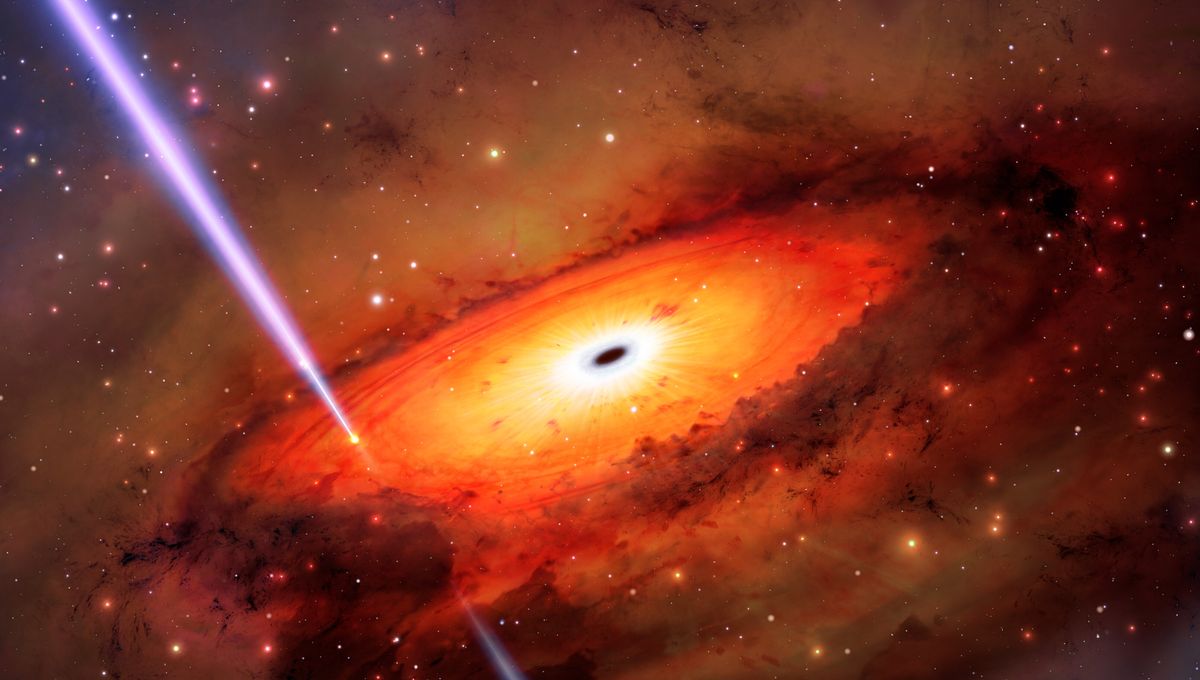
Stars have been seen to die in three ways. Small ones turn into white dwarfs after having exhausted their fuel and swelling up into red giants. Bigger ones explode in supernovae, forming black holes or neutron stars, or even leaving nothing behind. And then star and stellar remnants in binary systems can merge and go boom. Astronomers have finally seen a fourth way, which has long been suspected to exist: unbounded stellar objects crossing paths in a collision.
A long-duration gamma-ray burst, GRB 191019A, which lasted for 80 seconds, was tracked to the regions around a supermassive black hole in a galaxy 3 billion light-years away. There, stars are packed tightly together and they end up interacting. In this case, in a demolition derby-style collision.
“These new results show that stars can meet their demise in some of the densest regions of the universe where they can be driven to collide,” lead author Andrew Levan, an astronomer with Radboud University in The Netherlands, said in a statement. “This is exciting for understanding how stars die and for answering other questions, such as what unexpected sources might create gravitational waves that we could detect on Earth.”
The source of long-duration gamma-ray bursts (any burst longer than two seconds but less than 10,000) is usually a very massive star going supernova, but the region where GRB 191019A comes from is ancient. There shouldn’t be any stars capable of those explosions. For this reason, researchers looked for a dynamical explanation for the powerful flash of light.
Observations conducted with the Gemini South Telescope suggest the collision of two compact objects. The environment at the center of the galaxy is so packed with stars that their gravitational interactions can eventually push objects to cross paths in a fatal way.
“Our follow-up observation told us that rather than being a massive star collapsing, the burst was most likely caused by the merger of two compact objects,” said Levan. “By pinpointing its location to the center of a previously identified ancient galaxy, we had the first tantalizing evidence of a new pathway for stars to meet their demise.”
These events might be more common than previously thought, but the centers of galaxies are busy, dusty environments, so they might have gone unnoticed so far. The team hopes to find more of these events and even obtain observations with gravitational waves as well.
The study is published in the journal Nature Astronomy.
Source Link: Stellar "Demolition Derby" Leads To Never-Before-Seen Star Destruction